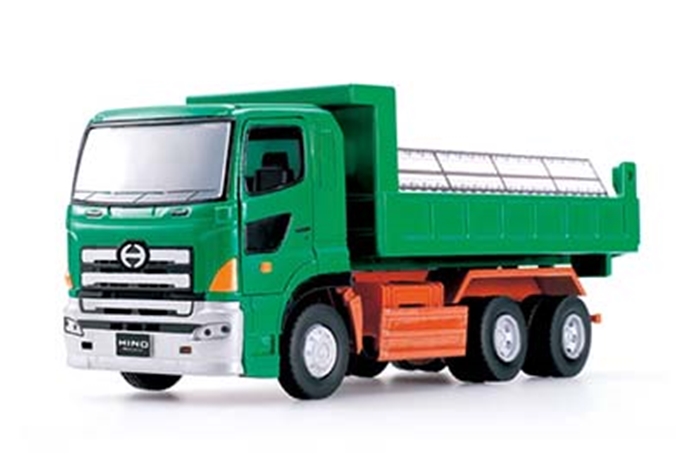
Like any profession, trucking comes with its own set of buzzwords. We continue to look at some of the less obvious ones — some of which can be quite obscure. Here's another five, as part of our ongoing Trucking 101 series.
Tractive effort
When buying a truck, most people look solely at the horsepower figure printed on the door. If performance is a key driver, this should not just be the sole factor you should consider. There are multiple factors that can affect the ultimate performance of the truck including tractive effort. Tractive effort is a measure of performance based on the entire driveline of the vehicle i.e. Engine, transmission, differential and tyres.
When a new model is first conceived, engineers both local and at the factory work hard to put together the correct combination of ratios to ensure ultimate performance. If this combination is not correct, what may seem to be a suitably powered vehicle will ultimately appear slow and lack performance (Or Tractive effort).
So, we can basically calculate tractive effort by multiplying engine torque, transmission ratio, diff ratio and divide by the tyre size. This is a measure of the amount of power needed to overcome the force of gravity and keep the rig moving at the appropriate speed.
Other factors to be considered when working out tractive effort include acceleration, friction among its components, air resistance, tyre grip and whether travelling up or down a grade.
Gradeability (hill-climbing ability)
In simple terms, gradability is how fast a vehicle will go up a hill. We can work this out by using tractive effort in combination with information about the road surface and the vehicle weight.
To determine the maximum traction of the vehicle, there is a need to evaluate the road surface.
Soft surfaces like sand, gravel, slippery clay will mean a lower rolling resistance and result in a lower gradability.
Of course the weight of the vehicle will have an enormous effect on the gradability of the vehicle - the heavier the vehicle the slower you will go.
With this calculation, a manufacturer can now determine at what speed and in what gear a vehicle can climb a gradient. This is particularity helpful with model selection.
Wheelbase (WB)
The wheelbase is the distance between the front and rear wheels, measured from front axle to the centre of the rear wheel, or in the case of multiple rear wheels, the centre of the axle group.
The length of the wheel base affects the way weight distributed on the vehicle’s axles, which can ultimately impact correct steering characteristics.
A truck with a long wheelbase will give a smoother ride, as the interval between front and rear wheel bumps is greater; even a slight variation in wheel base can make a noticeable difference. And because the separation between front and rear wheels is greater, the rig will feel more stable overall and fewer jolts for driver and load.
A few additional things to consider. A longer wheel base vehicle requires additional steel and componentry, meaning more weight which will reduce the payload. Even if only slightly; loss of payload can mount up over time. Be sure to include your gross weight ratings and tare weight. Also keep in mind, the longer the truck, the more skilled the driver needs to be to drive in and out of tight spots.
Rear overhang (ROH)
That's the part of your truck that reaches beyond your rear axle/s to the end of the vehicle. In the case of multiple rear axles, say two, the rear overhang is determined from the centre of the axle set.
The overhang limit is set by most authorities as 60% of the vehicle wheelbase, with a maximum dimension of 3.7 metres. In some applications, it is possible to request an exemption to this limit. For more information on this, visit the National Vehicle Regulator website.
Keep in mind your load is part of your vehicle's dimensions. As a rule of thumb, the less your load overhangs, the better. Even if within set limits, loads should meet obvious safety requirements that common sense would dictate. Care also needs to be taken to ensure that overhangs do not obscure licence plates or rear lights.
Payload capacity and weight distribution
Payload capacity is a measurement of how much weight your fully loaded truck can carry. To calculate your payload of a rigid vehicle subtract your vehicle's Gross Vehicle Mass (GVM). Knowing the payload capacity of a vehicle is important when selecting a truck for a particular application and meeting the legal limitations.
Weight distribution is basically how the truck is loaded, how that load is applied over the chassi and how the weight is distributed over the axles. The key to calculating weight distribution is the Centre of Gravity (CoG).
In theory the payload should be half way along the truck body and along the centre line of the truck however, this may not always be the case due to other components on the vehicle. The load should also be at the lowest point possible to ensure stability, especially when cornering.
Calculating weight distribution can be complicated, the vehicle could have accessories added or other components added such as a crane or tailgate loader. It is possible to calculate this manually but most dealers will have a dedicated computer program to show you exactly what will happen when you load the vehicle.
Remember As a final note, when calculating weight distribution, you will also need to take into consideration how much load, if the load has multiple drop off locations and if so, how the removal of the first load will impact the remaining weight distribution. It's definitely and art.
Want to know more?
We've only skimmed the surface here. Pease feel free to contact your Hino dealer for any further information you need.